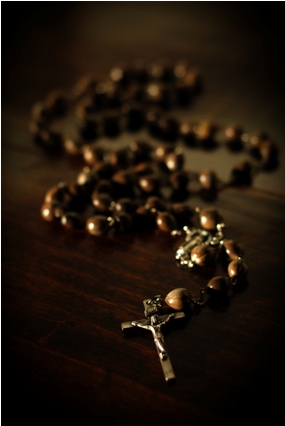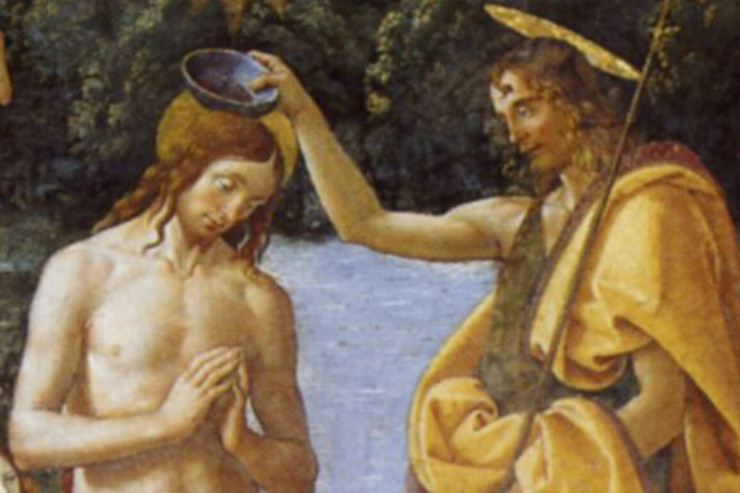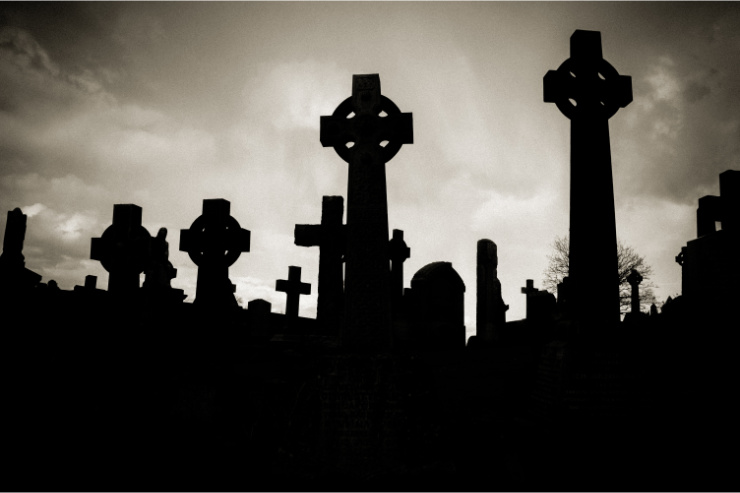
Photography © by Andy Coan
I was brought up in a devout Protestant, Evangelical home in Pennsylvania. We weren’t exactly anti-Catholic, but we thought Catholics needed to “get saved.” After college in South Carolina, I moved to England and became an Anglican priest. It was my habit to make my annual retreat at the Benedictine Abbey of Quarr on the Isle of Wight. Just as I was about to leave for retreat, a parishioner gave me a rosary. She had just come back from a pilgrimage to the great Marian shrine of Walshingham, and she had felt led to buy me this gift. I had never used the rosary, and was prejudiced against it.
My first instinct was to reject this “Catholic superstition.” However, one of my guiding principles was a little saying I had discovered while a student. It is, “A person is most often right in what he affirms and wrong in what he denies.” So I looked at the rosary and asked myself why I was denying something used by millions of fellow Christians. Who was more likely to be right—me or the millions? So I went to the Abbey bookshop and found a little book of instruction and started to learn my way around that “chain of prayer that binds us to God.”
What happened next was terrible. Within weeks my life started to come apart at the seams. I was a young priest who thought he had everything together. Suddenly I began to see great fault lines in my life. I started to receive Christian counseling and God began the long process of sorting me out, and before He could start to put me together He had to take me apart. It wasn’t easy, but in the midst of it a gentle priest said to me, “Our Lady’s prayers have done you so much good haven’t they?” Only then did I realise that the healing process I was going through had started once I began using the rosary.
Since then I have used the rosary regularly in my life. The journey of Christian healing is never over; and the rosary has been my link back to that same power that constantly seeks to draw me back to Christ. I am also convinced that praying with the rosary has been one of the great magnets that finally drew me into full communion with the Catholic Church.
Evangelicals have great difficulties understanding the Catholic view of the Blessed Virgin Mary. At worst they think we worship Mary instead of God. At the least, they think our worship of Jesus Christ is distorted by our devotion to Mary. They have trouble accepting the Immaculate Conception and the Assumption of Our Lady. I had thought these things through, but it was the rosary that brought me to understand them with the heart, not just with the head.
Before I was a Catholic I prayed the rosary, but I changed the glorious mysteries. I could not yet accept the Assumption and Coronation of the Blessed Virgin. So I substituted other glorious mysteries that I thought were more based in Scripture: the Transfiguration and the Second Coming of Christ. I also wished that the rosary had included more of the gospel events of Christ’s ministry – not just the events of his birth, passion and triumph.
That is why I was delighted when, in 2002, Pope John Paul II published his great encyclical on the rosary – Rosarium Virginis Mariae. In the pastoral letter he introduces a new set of five mysteries. The new “Mysteries of Light” or “Luminous Mysteries” take us into his earthly ministry. Now ten years later most of us are used to these “new” mysteries of
- Our Lord’s Baptism,
- Our Lord’s First Miracle at the Wedding in Cana,
- Our Lord’s Teaching on the Kingdom and the need for Repentance,
- The Transfiguration and
- The Institution of the Eucharist.
I’m delighted with this renewal of the rosary not only for my own life, but because of my friendship with Evangelicals. I correspond regularly with many evangelical friends. I have to admit that most are not really interested in the Catholic Church. But some are interested and a few are attracted to the Catholic faith. However, they still have problems with our devotion to the Blessed Virgin Mary. By introducing more mysteries linked with the ministry of Christ the Holy Father John Paul answered some of their concerns.
HIs encyclical is worth re-reading. It can be found here. John Paul’s letter helps them understand that the rosary is not a form of “vain repetition.” Instead, when properly prayed, it is a way of meditating deeply on the redemptive work of Christ. The rosary is a tool. The Pope taught, “It serves as a means to an end and cannot become an end in itself.”
Evangelicals sometimes complain that the rosary ignores Scripture. The Pope taught us to renew again our interest in Scripture and use passages of Scripture to help us meditate through the rosary. Protestants also complain that the rosary focuses on Mary too much. The Pope has reminded all of us that the centre of the rosary is Christ not Mary.
One of the best things about Evangelicals is their emphasis on having a “personal relationship with Jesus”. Often that means they regard Christ as a friend and brother. That is good, but Jesus Christ is also our Lord and God. Because of this, our relationship with him should also be one of adoration and love. My evangelical friends admit that they are not strong on this aspect of worship. They shouldn’t be afraid of the rosary. It provides a way for all Christians to enter into a closer relationship with Christ. To contemplate is to spend time in Christ’s loving presence, and the rosary is an excellent way to do this. As the Pope reminds us, “To recite the rosary is nothing other than to contemplate with Mary the face of Christ.”
Fr. Dwight Longenecker is the parish priest of Our Lady of the Rosary Church in Greenville, South Carolina, and the author of many articles and books on the Catholic faith, including, Praying the Rosary for Inner Healing.
Visit his blog and website at www.dwightlongenecker.com and like his FACEBOOK page: http://www.facebook.com/FrDwightLongenecker.
Please help us in our mission to assist readers to integrate their Catholic faith, family and work. Tell your family and friends about this article using both the Share and Recommend buttons below and via email. We value your comments and encourage you to leave your thoughts below. Thank you! – The Editors














